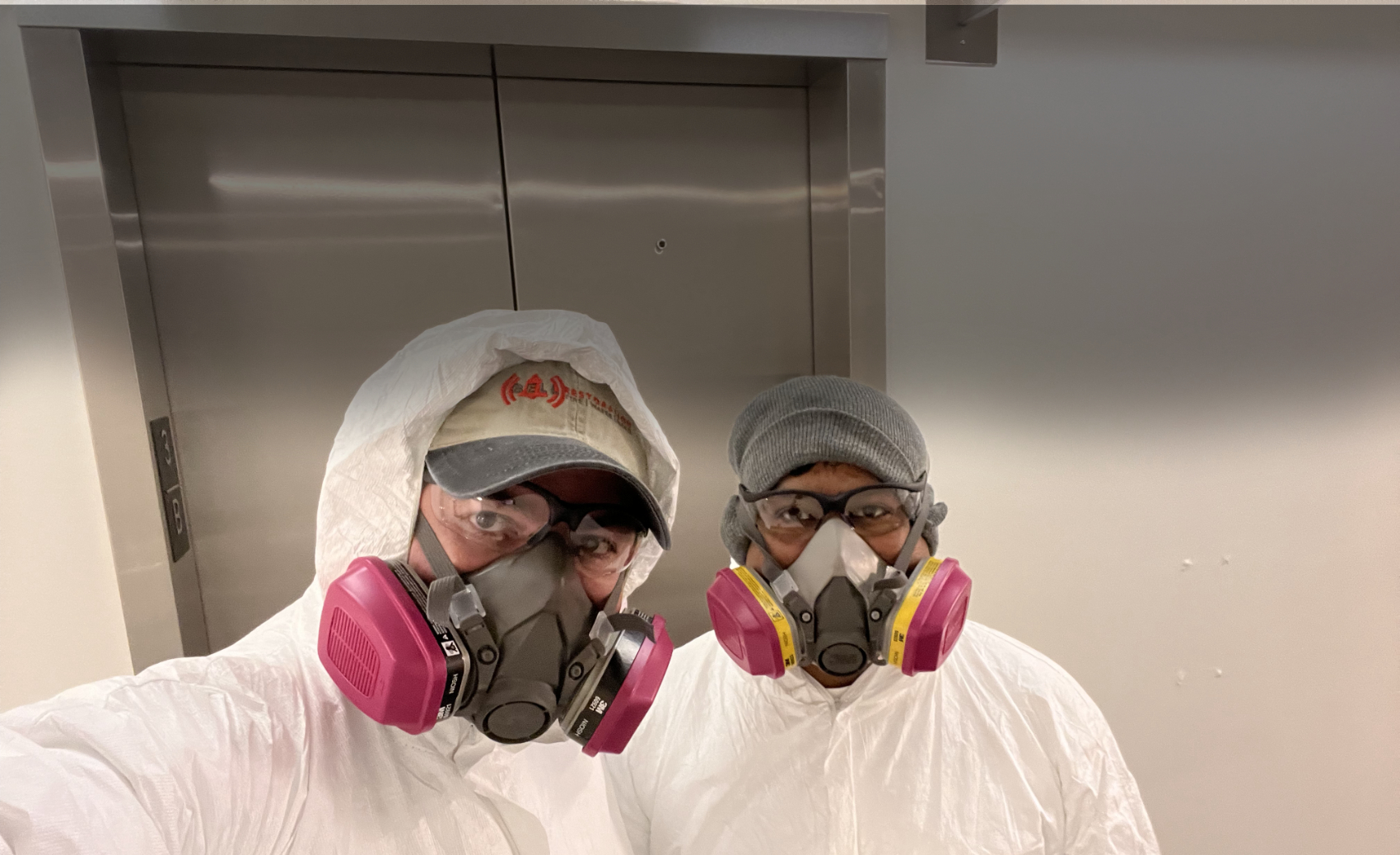

The Trauma and Crime Scene Technician (TCST) certification covers the unique situations encountered when performing trauma and crime scene cleanup, regardless of surface, item, or location. The certification demonstrates knowledge of the various procedures and precautions taken when performing work at a trauma/crime scene and is based on the ANSI/IICRC S540 Standard for Trauma and Crime Scene Cleanup. Upon achieving the certification, you demonstrate you know about inspecting and investigating human blood and other potentially infectious material (OPIM) contamination to establish hazard assessments, work plans, and procedures for cleaning and safely transporting contaminated material.

Our services include:
– Blood cleanup: We use special chemicals to remove blood safely and dispose of it securely. We secure the area against blood-borne pathogens, or diseases that live in the bloodstream, by putting bloody items in biohazard bags and following federal guidelines for biohazardous waste disposal at approved landfills or facilities.
– Crime scene cleanup: We remediate and decontaminate the crime scene, ridding it of fingerprint dust, drug debris, or tear gas while also sanitizing the area and removing threats of viruses and disease.
– Unattended death cleanup: When a person’s death is not detected for days or weeks, it is referred to as an unattended death, which can be very hard for a family to deal with. The decomposition of the body can lead to harmful bacteria spreading throughout the home, and we can eliminate it.
– Suicide cleanup: Suicide is one of the most traumatic incidents a family can endure, and our services can assist with handling the decomposition and odors that may occur. It’s critical that the task is not left to family members, who will only suffer more trauma.
We can perform these services in a home, office, or vehicle. Wherever you need trauma scene cleanup, our technicians can do it.
You can trust Bell Restoration for professional trauma cleanup services. We offer crime and trauma scene decontamination that will make the area as good as new when we leave.
The Water Damage Restoration Technician (WRT) S500 certification demonstrates knowledge to perform remediation work and an understanding of water damage, its effects, and techniques for drying structures. Upon achieving this certification, you demonstrate you have the background to understand the procedures necessary to deal with water losses, sewer backflows, and contamination such as mold.
Loss is when the water originates from a sanitary water source and does not pose a substantial risk if ingested or inhaled—some example of a category I water loss: Broken water supply lines. The sink or tub overflows with no contaminants. Melting ice or snow and falling rainwater
It is identified as water that contains a significant degree of chemical, biological, or contaminants that can cause discomfort or illness when exposed to or consumed. Known as "Gray Water," this type of water damage carries microorganisms and microorganisms that can cause sickness. Examples are dishwasher or washing machine overflows, water from sink drains, or toilet overflow without feces.
This is the worst classification and is grossly unsanitary. It could cause severe illness or death if ingested. It is also classified as “black water”. Examples are sewer backup, flooding from rivers or streams, toilet overflow with feces, and stagnant liquid that has begun bacterial growth.
It is the least harmful form of damage. Materials absorb very little of the water from this type of damage. Water damage repair is the easiest in this type of situation.
It has a fast rate of evaporation, which means that carpets and cushions may be damaged. Water damage repair is more problematic when it involves class 2 damage.
The the fastest rate of evaporation. The water may come from broken sprinklers or other overhead sources, soaking the walls and furniture.
Requires unique water restoration and water removal procedures. This type of damage may affect hardwood floors, plaster, and concrete.

The Fire and Smoke Restoration Technician (FSRT) certification covers scoping, mitigation, cleaning, deodorization, subrogation, destruction, and documentation of residential and commercial fire and smoke-damaged structures and contents. Upon completing this certification, you demonstrate that you can perform and document cleaning and deodorization of typical residential or commercial fire and smoke damage projects.

Mold remediation requires mold removal specialists to perform techniques that promote source removal rather than relying on chemicals, paints, and coatings as a replacement,” “Understanding and managing air flow is also critical to the success of a mold remediation project. Working with a qualified Bell Restoration Tech can also help reduce the technician's liability and provide a final determination if the remediation was successful.



Hi my name is Allyson Bell I am a woman owner, we are your neighbors, we work in the most professional manner, we are the most certified company in the city, we are a company certified by the Washington State Department of Health and Drugs, our tech’s have IICRC, OSHA and EPA certifications, the most important thing is that we respect your property. We working 24/7 365 no metter what we are here for you (206) 400-7709